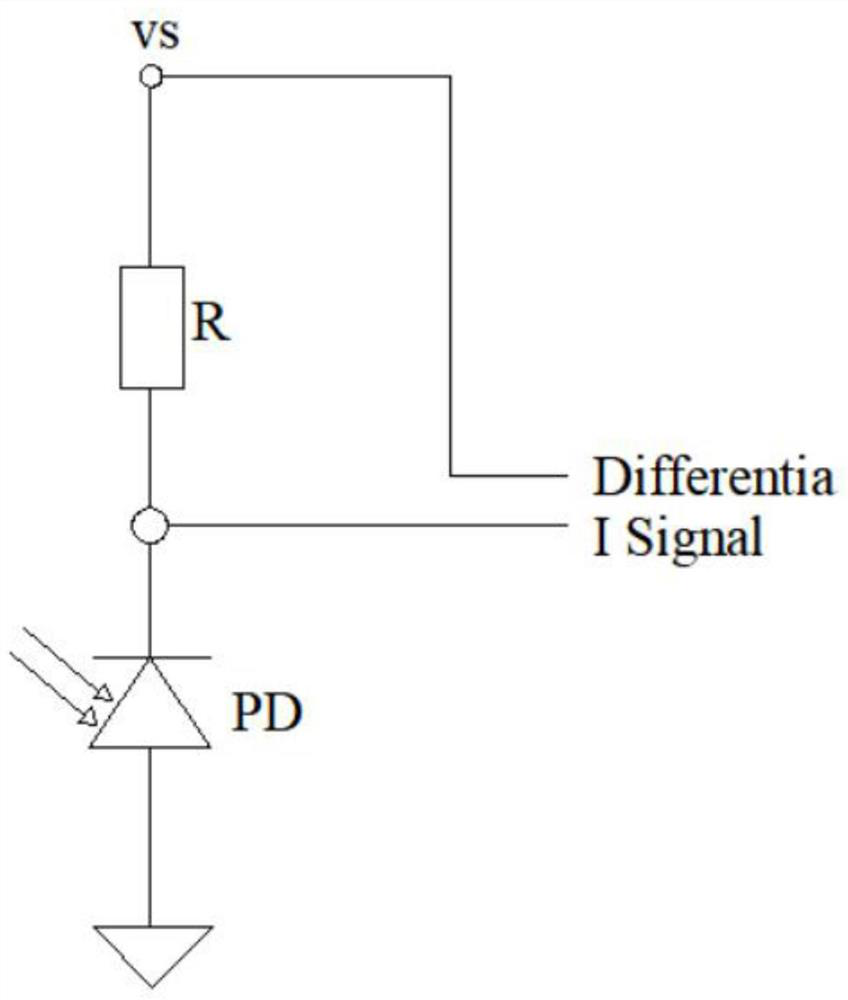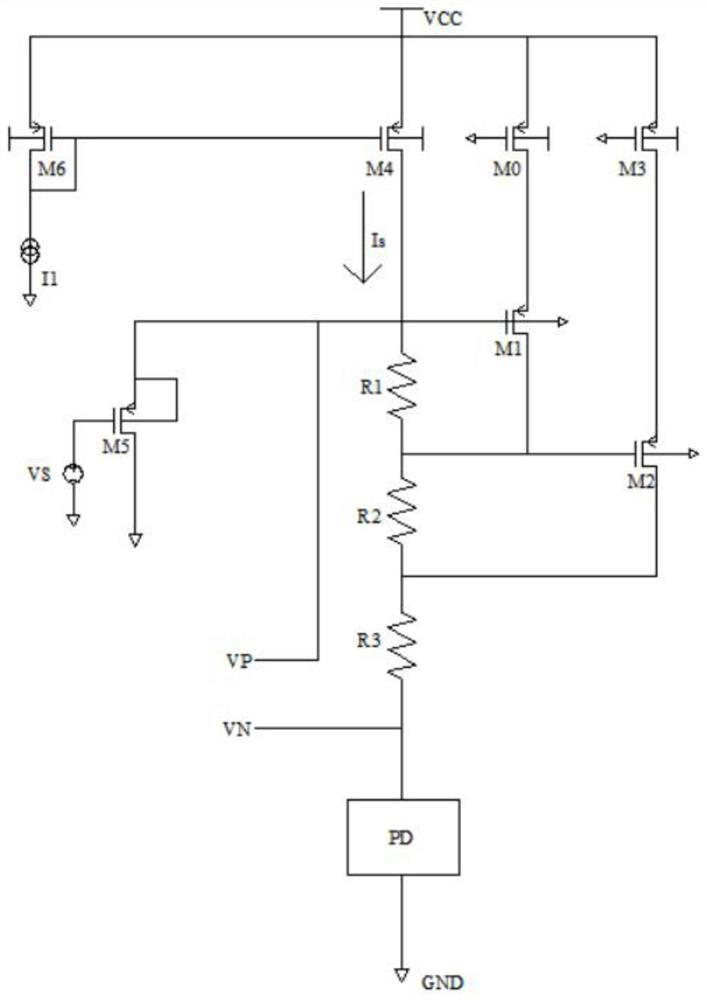Photoelectric signal receiving method for realizing self-adaptive switching of sampling resistance values
A technology of self-adaptive switching and sampling resistance, which can be used in self-adaptive network, photometry, and photometry using electrical radiation detectors. It can solve the problem that the photoelectric signal receiving method cannot accept photoelectric signals.
- Summary
- Abstract
- Description
- Claims
- Application Information
AI Technical Summary
Problems solved by technology
Method used
Image
Examples
Embodiment 1
[0032] refer to Figure 1-3 , to realize the photoelectric signal receiving method of adaptively switching the sampling resistance value, including sampling resistance, voltage source, photosensitive diode, PMOS tube and NMOS tube, the photosensitive diode will generate different currents with the intensity of the incident infrared light signal, and the photosensitive diode will generate The different currents are connected to the voltage source through the sampling resistor, the voltage source is defined as VS, the photosensitive diode is PD, the PMOS tube includes M4, M5 and M6, the NMOS tube includes M1 and M2, and the PMOS tube and NMOS tube are connected to the voltage source. The sampling resistor includes R1, R2 and R3, and the specific photoelectric signal receiving method includes the following steps:
[0033] S1: The current mirror composed of PMOS transistors M6 and M4 generates mirror current;
[0034] S2: The reference voltage is the voltage source, and the VP no...
Embodiment 2
[0047] refer to Figure 1-3 , to realize the photoelectric signal receiving method of adaptively switching the sampling resistance value, including sampling resistance, voltage source, photosensitive diode, PMOS tube and NMOS tube, the photosensitive diode will generate different currents with the intensity of the incident infrared light signal, and the photosensitive diode will generate The different currents are connected to the voltage source through the sampling resistor, the voltage source is defined as VS, the photosensitive diode is PD, the PMOS tube includes M4, M5 and M6, the NMOS tube includes M1 and M2, and the PMOS tube and NMOS tube are connected to the voltage source. The sampling resistor includes R1, R2 and R3, and the specific photoelectric signal receiving method includes the following steps:
[0048] S1: The current mirror composed of PMOS transistors M6 and M4 generates mirror current;
[0049] S2: The reference voltage is the voltage source, and the VP no...
Embodiment 3
[0062] refer to Figure 1-3 , to realize the photoelectric signal receiving method of adaptively switching the sampling resistance value, including sampling resistance, voltage source, photosensitive diode, PMOS tube and NMOS tube, the photosensitive diode will generate different currents with the intensity of the incident infrared light signal, and the photosensitive diode will generate The different currents are connected to the voltage source through the sampling resistor, the voltage source is defined as VS, the photosensitive diode is PD, the PMOS tube includes M4, M5 and M6, the NMOS tube includes M1 and M2, and the PMOS tube and NMOS tube are connected to the voltage source. The sampling resistor includes R1, R2 and R3, and the specific photoelectric signal receiving method includes the following steps:
[0063] S1: The current mirror composed of PMOS transistors M6 and M4 generates mirror current;
[0064] S2: The reference voltage is the voltage source, and the VP no...
PUM
 Login to View More
Login to View More Abstract
Description
Claims
Application Information
 Login to View More
Login to View More - R&D
- Intellectual Property
- Life Sciences
- Materials
- Tech Scout
- Unparalleled Data Quality
- Higher Quality Content
- 60% Fewer Hallucinations
Browse by: Latest US Patents, China's latest patents, Technical Efficacy Thesaurus, Application Domain, Technology Topic, Popular Technical Reports.
© 2025 PatSnap. All rights reserved.Legal|Privacy policy|Modern Slavery Act Transparency Statement|Sitemap|About US| Contact US: help@patsnap.com



